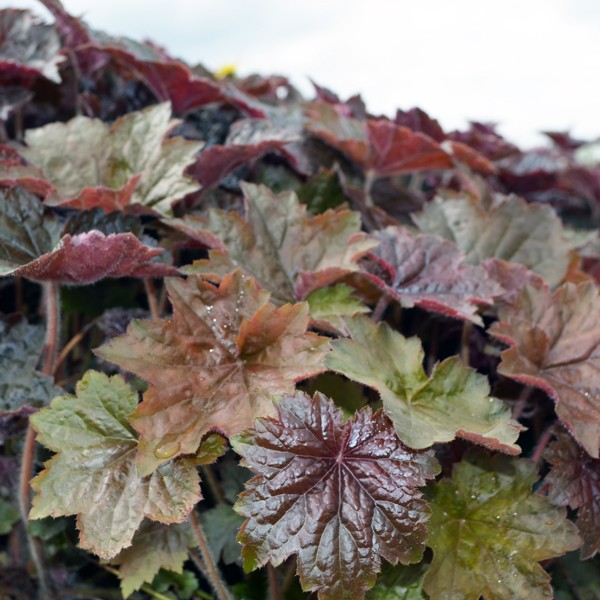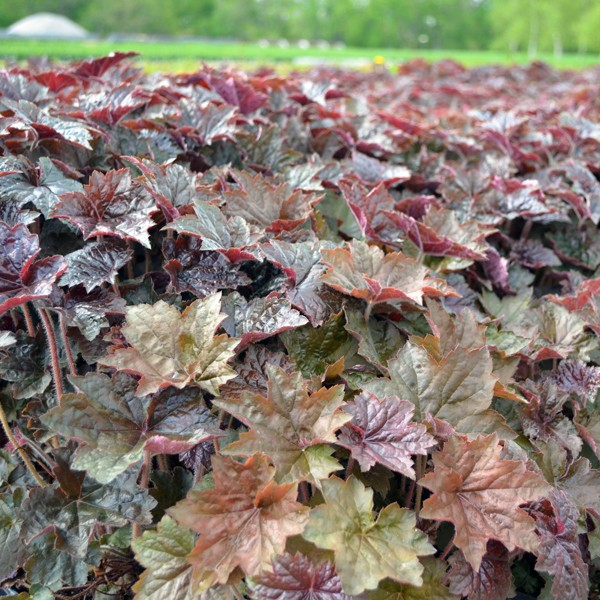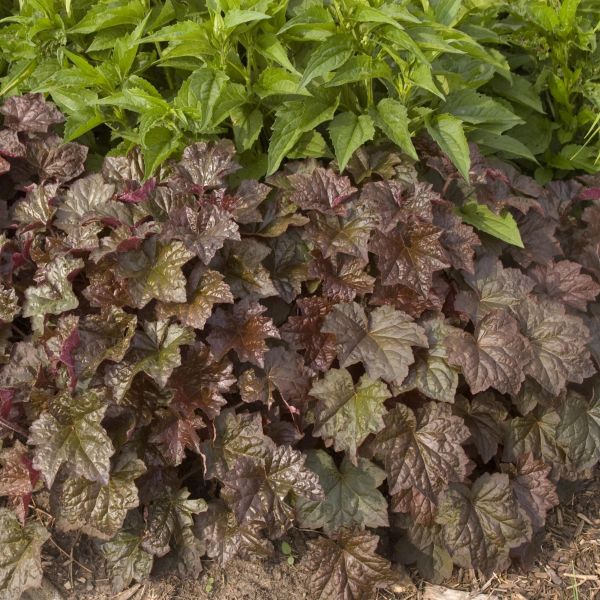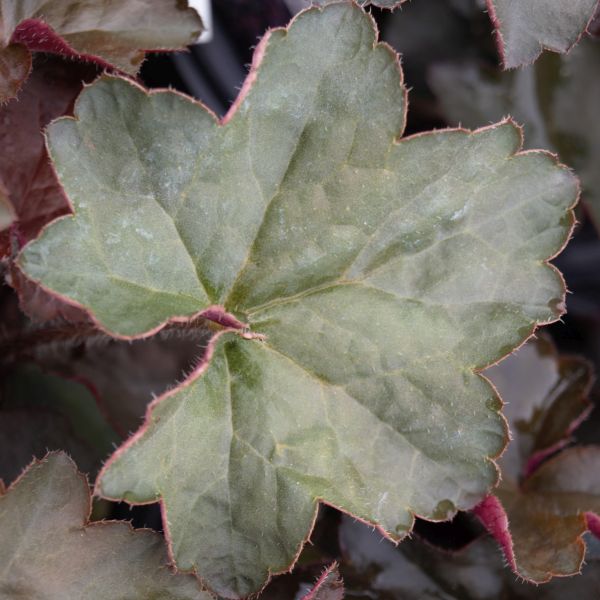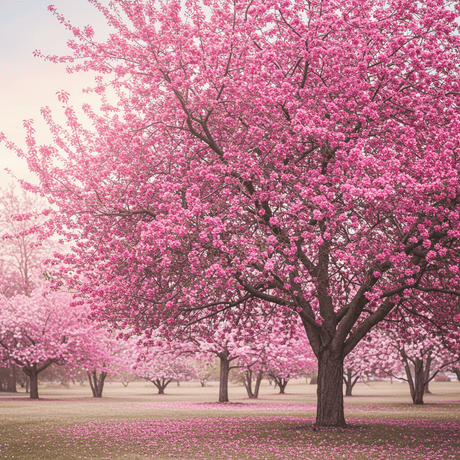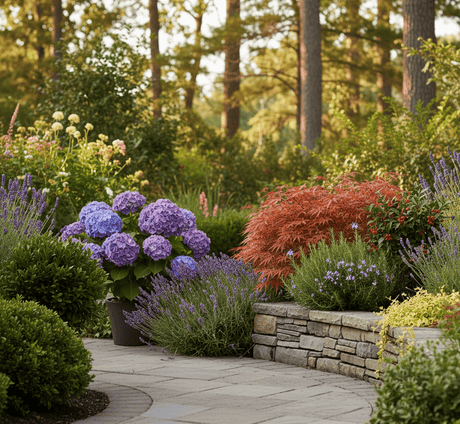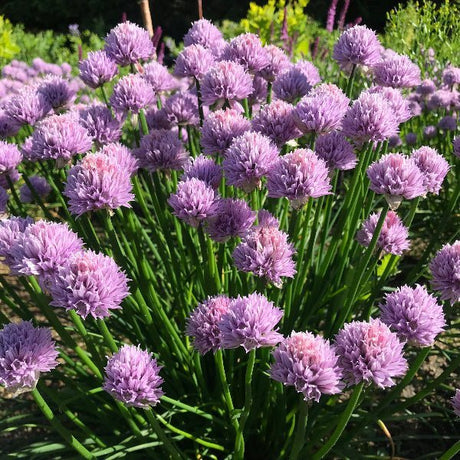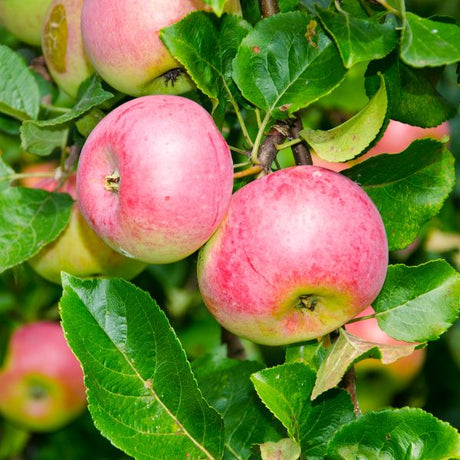Palace Purple Coral Bells
Heuchera micrantha 'Palace Purple'
- Stay Protected with Plant Sentry ™
Palace Purple Coral Bells - #1 Container is backordered and will ship as soon as it is back in stock.
Plant Sentry™
Plant Sentry™

Plant Sentry™ Protected
Your order is protected by our compliance system that:
- Prevents restricted plants from shipping to your state
- Ensures plants meet your state's agricultural requirements
- Protects gardens from invasive pests and diseases
Delivery and Shipping
Delivery and Shipping
Delivery and Shipping
Fast, Safe Plant Delivery
Ships in 3-4 business days • Tracking provided • Weather protected
| Under $50 | $9.99 |
| $50 - $99.99 | $14.99 |
| $100 - $149.99 | $16.99 |
| $150 - $198.99 | $24.99 |
| $199+ | FREE |
✓ Zone-specific timing • ✓ Professional packaging • ✓ Health guarantee
Understanding Plant Options
Nature Hills offers plants in two main formats:
- Container Plants: Grown in pots with soil, sized by container volume and plant age
- Bare Root Plants: Dormant plants without soil, sized by height measurements
Container Plant Sizes
Container sizes indicate plant age and growing capacity rather than liquid volume equivalents. Our containers follow industry-standard nursery "trade gallon" specifications, which differ from standard liquid gallon measurements.
Young Plants (6 months to 18 months old)
| Container Size | Actual Volume | Metric Equivalent |
|---|---|---|
| 2" x 2" x 3" | 0.18 - 0.21 dry quarts | 0.20 - 0.23 dry liters |
| 4" Container | 0.31 - 0.87 dry quarts | 0.35 - 0.96 dry liters |
| 4.5" Container | 0.65 dry quarts | 0.72 dry liters |
| 6" Container | 1.4 dry quarts | 1.59 dry liters |
| 1 Quart | 1 dry quart | 1.1 dry liters |
| 5.5" Container | 1.89 dry quarts | 2.08 dry liters |
Established Plants (18 months to 2.5 years old)
| Container Size | Actual Volume | Metric Equivalent |
|---|---|---|
| 2 Quart | 2 dry quarts | 2.2 dry liters |
| #1 Container | 2.26 - 3.73 dry quarts | 2.49 - 4.11 dry liters |
| 5" x 5" x 12" | 3.5 - 4.3 dry quarts | 3.85 - 4.74 dry liters |
Mature Plants (2-4 years old)
| Container Size | Actual Volume | Metric Equivalent |
|---|---|---|
| #2 Container | 1.19 - 1.76 dry gallons | 5.24 - 7.75 dry liters |
| #3 Container | 2.15 - 2.76 dry gallons | 8.14 - 12.16 dry liters |
Large Plants (3-5 years old)
| Container Size | Actual Volume | Metric Equivalent |
|---|---|---|
| #5 Container | 2.92 - 4.62 dry gallons | 12.86 - 20.35 dry liters |
| #6 Container | 5.25 - 6.01 dry gallons | 23.12 - 26.42 dry liters |
| #7 Container | 5.98 - 6.53 dry gallons | 26.34 - 28.76 dry liters |
Bare Root Plants
Bare root plants are sold by height from the root system to the top of the plant. Plants may exceed minimum height requirements.
Common Sizes:
- Trees: 1 foot, 2 feet, 3 feet, 4 feet, 5 feet, 6 feet
- Shrubs & Perennials: 1 foot, 18 inches, 2 feet
Important Notes
Container Volume Specifications
- Trade Gallon Standard: Our containers follow industry-standard "trade gallon" specifications established by the American National Standards Institute (ANSI Z60.1) for nursery stock
- Volume Variations: Actual soil volume may vary due to plant root systems and growing medium settlement
- Age Indicators: Container size primarily indicates plant age and maturity rather than liquid volume equivalents
Growing Conditions
- Plant size can vary based on variety and growing conditions
- Container size helps indicate plant maturity and establishment level
- Larger containers generally mean more established root systems and faster landscape establishment
Seasonal Availability
- Bare root plants are available seasonally when dormant
- Container plants are available throughout the growing season
- Specific varieties may have limited availability in certain sizes
Questions?
For questions about specific plant sizes or availability, please contact our plant experts who can help you choose the right size for your landscape needs.
Plant Highlights
Palace Purple Coral Bells highlights at a glance!
-
Botanical Name
-
Brand
-
Growing Zones4, 5, 6, 7, 8, 9
-
Growth RateModerate
-
Mature Height
-
Mature Width
-
Leaf Color
-
Flower Color
-
Fall Color
-
NativeYes
-
Pollinator FriendlyYes
-
Pollinator Required
-
Bloom PeriodLate Spring, Early Summer
-
Does Not Ship To
Characteristics
Where To Plant
When To Prune
- Early Spring
Water & Moisture Needs
- Moderate
Sunlight Needs
Soil Needs
- Well Drained
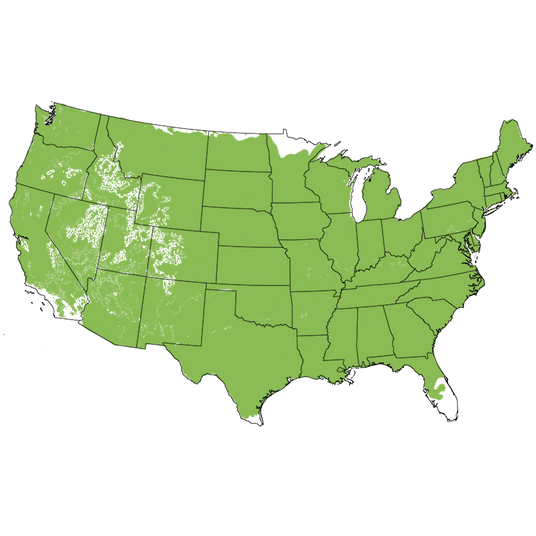
Growing Zones
Glossy and dark plum-purple! The Palace Purple Coral Bells (Heuchera micrantha var diversifolia 'Palace Purple') is one of the most popular Coral Bells on the market! Named Perennial of the Year in 1991, one can see why! Featuring rich deep-purple foliage, fading to bronzy green in hot summers, plus dark red stems with white flowers, it is a little different than the rest of the Coral Bells family!
In the springtime, small pinkish-white flowers appear on tall, airy red stems. Calling beneficial pollinators and butterflies, you'll be glad you planted a few extras for them! Even Hummingbirds will arrive to sip the nectar! Plus these graceful bell-shaped blooms are lovely in floral bouquets! These graceful flowers last all summer through fall, however, Coral Bells are not known for their flowers, but for their foliage!
Also known as Alumroot, easy-to-grow Heuchera holds its color throughout the summer heat and humidity, right until frost. If you live in a warmer climate, you might just see your Coral Bells maintain their foliage through the winter too! Heat and cold-hardy throughout USDA growing zones 4 to 9 and grow to a rounded mound 15-24 inches in height and 12-18 inches in width.
Planting and Application:
A standout plant like this, with 3-4 seasons of color, deserves the spotlight! Rightfully deserving a space-saving specimen plant location, these have a depth of color perfect as a garden accent plant as well! Growing to create a low-maintenance groundcover, they add an amazing designer touch to your landscape! Plant as low-growing edging for garden beds, or in mass as an attractive ground cover! Great size for container gardening and Balcony gardens too!
Palace Purple is especially showy when planted among the vibrant colors of other Coral Bells! Try creating a focal point planting in your garden by clustering these in a grouping of 3 or more for a stand-out accent!
Palace Purple looks especially fantastic as a border along the shady side of your home's foundation or as low edging along your shade garden beds. Line your shaded walkways and driveways for a dramatic row of color! Great for shady Woodland gardens, Rock Gardens, Perennial borders, and Cottage gardens, the incredible color saturation highlights all other plants! Intersperse throughout Rose gardens and lovely for the Cutting gardens so your summer vases are full of beauty!
- Glossy Deep Dark Purple Foliage & Slender Red Stems
- Fades to Bronzy Green in Summer
- Pinkish-White Bell-Shaped Flowers
- Mounding Spreading Perennial
- Containers & Specimen, Great Groundcover En Masse
- 1991 Perennial Plant of the Year
#ProPlantTips for Care:
Palace Purple needs regular watering and shade and afternoon shade, especially in the southern climates and during summer. Adaptable to occasionally wet conditions, they're best in moderately moist, very well-drained soils. Coral Bells planted in cooler growing zones thrive in more sun and a bit less moisture. They can tolerate some morning sun and partial shade, but in hotter climates need to plant these in full shade to prevent leaf burn. These Perennials withstand heat and humidity, deer and rabbits, and are even drought tolerant! Not much can faze this plant!
Preferring rich soils that have a good amount of organic matter, fertilize in early spring when new growth begins to emerge. But once established, Coral Bells can be drought tolerant, but appreciate a 3-4 inch thick layer of mulch to hold in moisture and keep the roots cool. Prune back foliage in early spring before new growth begins. Easy to grow, just shear back when dormant for a clean winter look. If desired, divide clumps in fall to prevent overcrowding. Mulch provides insulation from heat and chill and holds moisture in the soil more consistently.
- Morning Sun, Part Shade or Full Shade
- Adaptable to a Variety of Well-Drained Soils & Conditions
- Herbaceous Perennial - Semi-Evergreen in Warm Winters
- Prune Back in Early Spring
- Drought & Juglone Resistant
- Easy to Care For & Urban Environment Tolerant
- Heat & Humidity Tolerant
Heuchera adds dramatic foliage color to any landscape with incredibly saturated hues, texture, and vigor. Palace Purple Coral Bells will surely become a must-have as it contrasts incredibly with brighter colors in your garden! Order yours today at NatureHills.com!
Frequently Asked Questions
How do I prune Coral Bells?
Coral Bells do best when pruned in the early spring. Leaving the foliage intact as an extra blanket for winter protection over the crown. In some climates, Coral Bells can be semi-evergreen, so leaving those colorful leaves up all winter adds winter interest!
Do Coral Bells prefer sun or shade?
Coral Bells need partial sun/shade or full shade in warmer climates. They do best in the morning sun to dry the leaves of dew and afternoon shade to provide relief from the hot summer sun.
Do Coral Bells spread?
Coral Bells can spread into tidy mounds about 2-3 feet in width but do not spread by rhizomes or stolons further than where they're planted.
Where do Coral Bells grow best?
Coral Bells love a shaded site in enriched soil that is well-drained. They appreciate regular moisture and a mulched root zone.
Do Coral Bells attract hummingbirds?
Coral Bells are loved by pollinators and hummingbirds! All walks of beneficial pollinators will show up to sip their nectar.
What pairs with Coral Bells?
These shade-loving perennials pair with lacy Astilbe and Ferns, other coarse foliage plants like Hosta, and the lobed foliage of Columbines! Try pairing with Barrenworts and Bergenia too!
What Shipping Options Do You Offer?
NatureHills.com works closely with our growers and nursery professionals to ensure we ship when it is most appropriate for your area. Our goal is to deliver the hardiest plants by avoiding extreme high and low temperatures. Check out our shipping schedule for more information and to learn our wills and don'ts when it comes to shipping plants. Find your Coral Bells for sale here at NatureHills.com!

